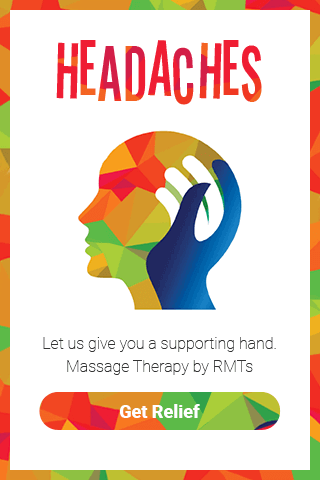METHODS
Subjects
Subjects were recruited for this study through physician invitation, fliers placed in the waiting room of health clinics, or local newspaper advertisements. To participate in the study, candidates had to be non-smokers aged 18 to 55 years who had experienced 2 to 3 headaches per week for at least the past 6 months. Fulfillment of these initial criteria was confirmed when the prospective subject called to express interest. The subjects were then scheduled for a diagnostic interview with the first author. Headache diagnosis was made according to International Headache Society (IHS) guidelines11. The enrolled subjects were limited to persons suffering from chronic tension headache (IHS classification 2.2) or episodic tension headache (IHS classification 2.1). Subjects suffering exclusively from either migraine with aura (IHS classification 1.1) or migraine without aura (IHS classification 1.2) were excluded from participation. However, subjects with distinct and occasional episodes of migraine with aura or migraine without aura in addition to chronic tension headache as a primary diagnosis were included.
A total of 25 subjects were interviewed, with 10 subjects meeting the criteria for inclusion in this phase of the study. Enrollment into the study occurred during November 2000. Subjects were instructed to continue pharmacological treatment if currently on medication but not to begin new pharmacological intervention during the course of the study. Similar instructions were given for nonpharmacological interventions. Six subjects were removed from the study owing to repeated missed treatments, lapses in diary recordings, or lack of availability for scheduling. Four subjects completed all therapy sessions and diary entries. The data from these 4 subjects are included in this study. All massage therapy procedures were performed with the subject in a supine position. Subjects were permitted to stop treatment at any time, for any reason.
Study Design
The 8-week study consisted of baseline headache measures recorded for the first 4 weeks, when each subject served as his or her own control, followed by twice-weekly, 30-minute massage therapy sessions for the remaining 4 weeks of the study. A logbook was completed daily by each subject every evening before retiring. The headache diary form was used to record number of headaches, intensity of most severe headache, and duration of longest headache for each day. Headache intensity was determined by having the subject draw a mark along a visual analog scale (0–100 mm, where 0 = no pain and 100 = most pain), with the distance from the 0 point determined in millimeters. Headache duration was recorded to the nearest quarter hour. Because headache parameters varied considerably from day to day, weekly averages are presented.
Massage Treatment
Each subject received a total of eight 30-minute massage therapy sessions during the 4-week treatment period. Two massage therapy sessions were administered each week and were separated by at least 48 hours. Massage therapy treatments were conducted by certified massage therapists, each with a minimum of 1000 hours of training and with 3 to 21 years of professional practice. A standardized, precise 30-minute massage treatment protocol was developed, refined, and practiced by each therapist for 4 weeks before the study began. The treatment protocol consisted of 6 distinct phases within the 30-minute time frame; brief descriptions of each phase follow.
Phase 1 – Preparatory tissue warm-up
(3 minutes) included bilateral pressure moving from the lower cervical region to the occiput. This procedure was repeated, with completion of 3 passes bilaterally.
Phase 2 – Myofascial release
(5 minutes) included 3 palmar glide passes each over the deltopectoral, deltoid, and posterior deltoid regions bilaterally. Additionally, 3 passes with a soft fist contact were made from the occiput to the lateral shoulder along the upper trapezius bilaterally.
Phase 3 – Axial cervical traction
(2 minutes) included application of manual axial traction with 1 hand under the head and neck and the other hand on the forehead. Gentle traction was applied with the head first slightly flexed, then with slight right lateral flexion, and finally with the head in slight left lateral flexion. Traction was held for 15 seconds in each position.
Phase 4 – Trigger point therapy procedure
(15 minutes) consisted of scanning palpation of the upper trapezius, sternocleidomastoid, suboccipital, splenius capitis, levator scapulae, and temporalis muscles to locate and manually treat trigger points16. When located, active trigger points were treated by pincer or flat palpation with just enough pressure to elicit referred pain or autonomic referral phenomena. That pressure was maintained on the trigger point until the client reported that the referral pain had dissipated or for a maximum of 2 minutes. Pressure on the active trigger point was then slowly eased to elicit a vascular flushing. This procedure was repeated 3 to 5 times on each trigger point. Typically, 6 active trigger points were treated in the time allotted.
Phase 5 – Facilitated stretching techniques
(5 minutes) consisted of muscle energy techniques, which included therapist-assisted lengthening and stretching of the cervical paravertebral musculature (20). The stretching procedure invoked relaxation through reciprocal innervation mechanisms. The antagonist musculature was isometrically contracted; this was followed by passive stretching of the agonist musculature.
Phase 6 – Session closure
(3–5 minutes) included relaxing effleurage and petrissage strokes and application of passive motion to the cervical region to end the session.
Each session was observed by a student assistant who served as timer for each phase and recorder of pain referral responses for each client. Each therapist was told to use only the practiced specific protocol and not to improvise during the treatment. The therapists were instructed that their role was to perform the protocol, not to specifically treat the subjects’ headaches.
